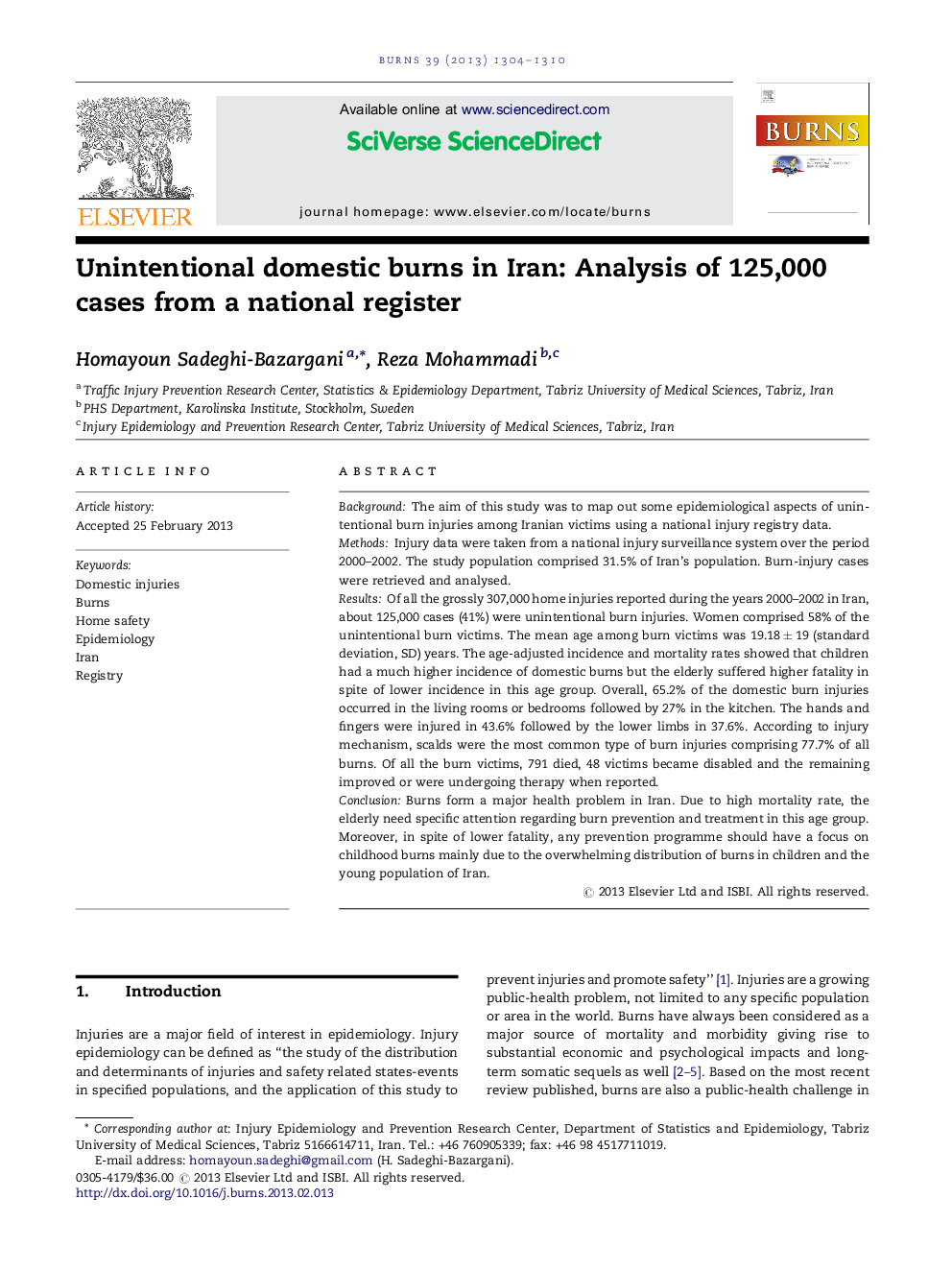| Article ID | Journal | Published Year | Pages | File Type |
|---|---|---|---|---|
| 3104856 | Burns | 2013 | 7 Pages |
BackgroundThe aim of this study was to map out some epidemiological aspects of unintentional burn injuries among Iranian victims using a national injury registry data.MethodsInjury data were taken from a national injury surveillance system over the period 2000–2002. The study population comprised 31.5% of Iran's population. Burn-injury cases were retrieved and analysed.ResultsOf all the grossly 307,000 home injuries reported during the years 2000–2002 in Iran, about 125,000 cases (41%) were unintentional burn injuries. Women comprised 58% of the unintentional burn victims. The mean age among burn victims was 19.18 ± 19 (standard deviation, SD) years. The age-adjusted incidence and mortality rates showed that children had a much higher incidence of domestic burns but the elderly suffered higher fatality in spite of lower incidence in this age group. Overall, 65.2% of the domestic burn injuries occurred in the living rooms or bedrooms followed by 27% in the kitchen. The hands and fingers were injured in 43.6% followed by the lower limbs in 37.6%. According to injury mechanism, scalds were the most common type of burn injuries comprising 77.7% of all burns. Of all the burn victims, 791 died, 48 victims became disabled and the remaining improved or were undergoing therapy when reported.ConclusionBurns form a major health problem in Iran. Due to high mortality rate, the elderly need specific attention regarding burn prevention and treatment in this age group. Moreover, in spite of lower fatality, any prevention programme should have a focus on childhood burns mainly due to the overwhelming distribution of burns in children and the young population of Iran.
